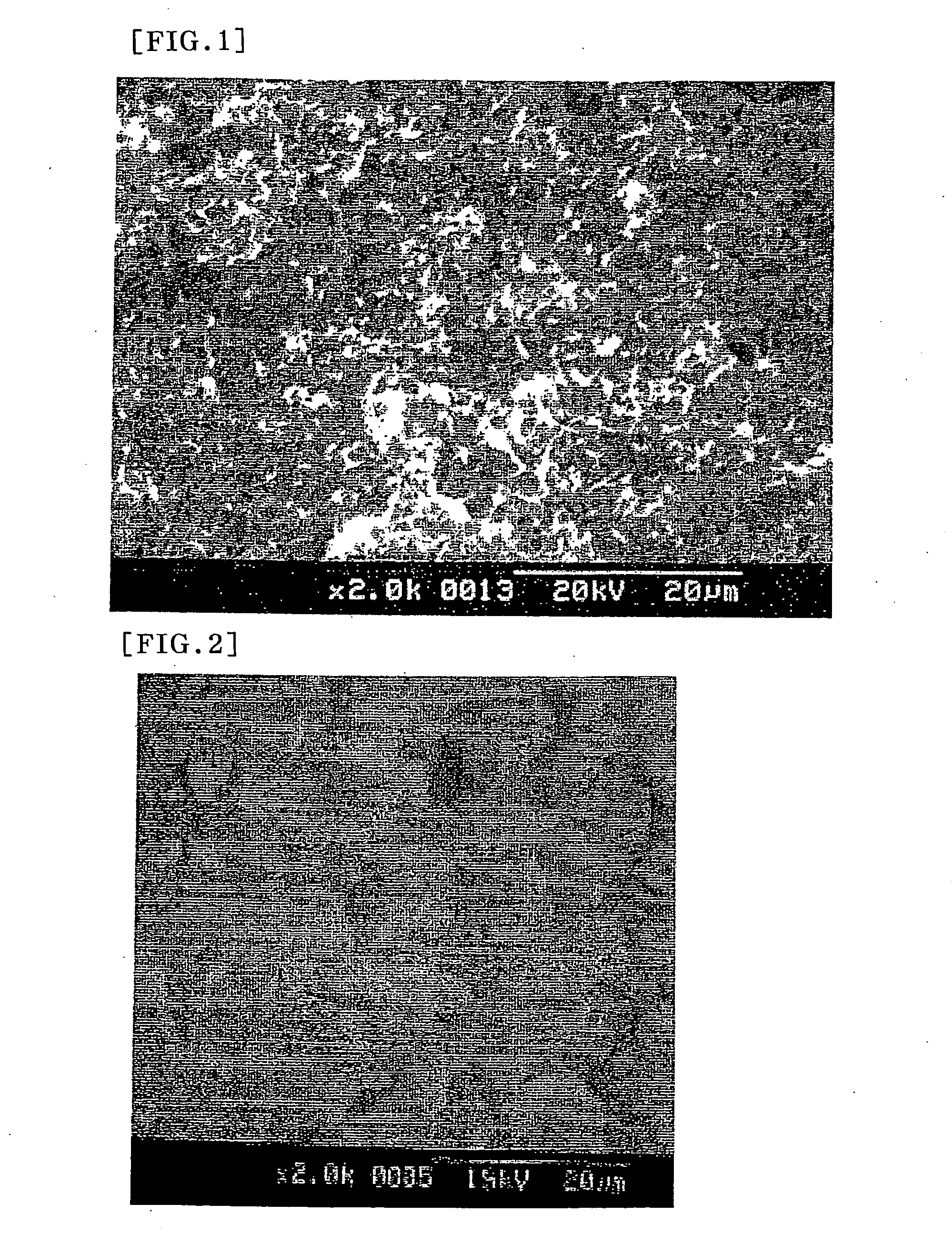Porous film and method for preparation thereof
a polyvinylidene fluoride and porous film technology, applied in cell components, cell component details, transportation and packaging, etc., can solve the problems of adhering substancese that cannot be removed, adhering to the film surface, and the wet-type film-forming method has a mechanical strength of porous film, so as to achieve satisfactory mechanical strength and permeation performance, and improve the hydrophilic property
- Summary
- Abstract
- Description
- Claims
- Application Information
AI Technical Summary
Benefits of technology
Problems solved by technology
Method used
Image
Examples
example 1
[0063] To 64 parts by weight of diethyl phthalate, 6 parts by weight of organized clay (SPN manufactured by Co-op Chemical Co., Ltd.) obtained by organization of a layered inorganic silicate with an alkylene oxide compound was added and dispersed by agitation for 4 hours at room temperature with a stirring blade at a speed of 3000 rpm while imparting a supersonic wave. Subsequently, 30 parts by weight of poly(vinylidene fluoride) (manufactured by Solvay Co., Ltd., SOLEF6020) were added, and the mixture was kneaded at 180° C. for 15 minutes at 50 rpm. After kneading, the resultant was temporarily cooled to room temperature to form a liquid raw material for a film. Thereafter, the prepared liquid raw material for a film was heated to 180° C. for homogeneous re-dissolution, pressed into a flat film having a thickness of 200 μm by pressurization, and put into a water bath of 5° C. for cooling to form a porous film. This porous film had an average pore diameter of 0.1 μm and a porosity o...
example 2
[0064] A porous film was obtained through an operation similar to that of Example 1 except that the blending ratio of the liquid raw material for a film was set to be 2 parts by weight of organized clay, 58 parts by weight of diethyl phthalate, and 40 parts by weight of poly(vinylidene fluoride). This porous film had an average pore diameter of 0.1 μm and a porosity of 65%.
example 3
[0067] By the method of Example 1, 1.5 parts by weight of organized clay (SPN manufactured by Co-op Chemical Co., Ltd.) obtained by organization of a layered inorganic silicate with an alkylene oxide compound, 68.5 parts by weight of diethyl phthalate, and 30 parts by weight of poly(vinylidene fluoride) were kneaded to obtain a liquid raw material for a film. This liquid raw material for a film was heated to 180° C. again and extruded into a cooling water tank, which had been regulated to have a temperature of 5° C., through a double-ring nozzle at 0.2 m / min using diethyl phthalate of 180° C. as a core liquid, so as to obtain a hollow porous film having an outer diameter of 1.0 mm and an inner diameter of 0.7 mm. The height from the nozzle to the cooling water tank was set to be 2 cm. This porous film had an average pore diameter of 0.1 μm and a porosity of 65%.
PUM
| Property | Measurement | Unit |
|---|---|---|
| Temperature | aaaaa | aaaaa |
| Pore size | aaaaa | aaaaa |
| Percent by mass | aaaaa | aaaaa |
Abstract
Description
Claims
Application Information
 Login to View More
Login to View More - R&D
- Intellectual Property
- Life Sciences
- Materials
- Tech Scout
- Unparalleled Data Quality
- Higher Quality Content
- 60% Fewer Hallucinations
Browse by: Latest US Patents, China's latest patents, Technical Efficacy Thesaurus, Application Domain, Technology Topic, Popular Technical Reports.
© 2025 PatSnap. All rights reserved.Legal|Privacy policy|Modern Slavery Act Transparency Statement|Sitemap|About US| Contact US: help@patsnap.com


